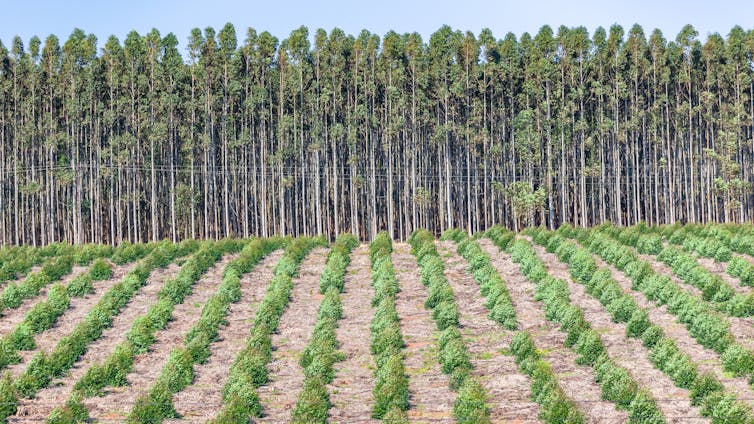The lengthy history of tree planting in India, which spans more than two centuries, provides insightful insights on the effects of various methods for recovering forests.

India’s Plantations in the Colonial Era
- British inclination: The East India Company and eventually the British Crown ruled India starting in the middle of the 18th century. During this time, British officials focused on India’s forests to supply their sizable timber requirements for shipbuilding and railway sleepers.
- The 1865 Indian Forest Act The Indian Forest Act of 1865 was passed by the British in order to guarantee a consistent supply of high-yield timber trees including teak, sal, and deodar. This law restricted local people’ rights to extract resources other than grass and bamboo and even prohibited cow grazing. It also turned numerous woods over to the state. Some Indian communities turned to burning down woods as a response.
- Increase in Teak Monocultures: Teak expanded quickly because it thrives in India’s hot, humid climate and is valued for its strong wood. This resulted in the displacement of indigenous hardwood trees like sal and the conversion of pristine meadows and open scrub woodlands into teak monocultures.
- Exotic tree species were introduced for use as fuel, fodder, and lumber, including eucalyptus, European and North American pines, and Australian acacia trees. Wattle’s invasion of this ecologically vital region began with its introduction in the Nilgiris district of the Western Ghats in 1861.
- Changes to Ecosystems: These alien species, particularly wattle and pine, started to supplant native flora, which had an effect on the ecosystem and way of life of the surrounding areas. These difficulties were made worse by the disappearance of native oak and sal trees, which were crucial for a number of reasons.
Studying Previous Tree Plantation Efforts is Important
- Regeneration Techniques Natural forest regeneration techniques have historically increased biodiversity, decreased carbon emissions, and provided chances for subsistence.
- Initiatives to Expand Global Tree Cover: Past initiatives have also shown how important it is to distinguish between carbon offsetting and replanting for timber production. The latter frequently entails planting quickly expanding trees to provide timber and validate carbon credits for emission reductions.
- Sustainable Practises: Planting trees to produce firewood and timber on farms and bare land reduced pressure on natural forests and supported their recovery.
- Unintended Consequences: The unplanned introduction of exotic species can result in the spread of invasive species and the encroachment of alien species on the land and resources of the host communities.
India’s current restoration efforts
- Indian Dedication: Under the Bonn Challenge, a global project aimed at restoring degraded and deforested landscapes, India has committed to restoring around 21 million hectares of forest by 2030.
- Focus on Single Species Plantations: India has concentrated on planting single species like eucalyptus or bamboo, which grow quickly and increase tree cover, in order to meet the National Forest Policy aim of a 33% forest cover.
Environmental and human health effects
- Concerns regarding Native Americans: It may be harmful to rural and indigenous cultures to deforest grassland habitats because they are by nature devoid of trees. Village councils are granted management authority over traditional forest areas under the Forest Rights Act of 2006.
- Species at Risk of Invasion: Continued foreign tree planting puts people at risk for the introduction of new invasive species, just like the wattle invasion two centuries ago.
Source: https://www.thehindu.com/sci-tech/energy-and-environment/india-was-a-tree-planting-laboratory-for-200-years-here-are-the-results/article67273574.ece#:~:text=in%202022%3A%20study-,For%20more%20than%20200%20years%20India%20has%20experimented%20with%20tree,communities%20and%20the%20wider%20environment.
